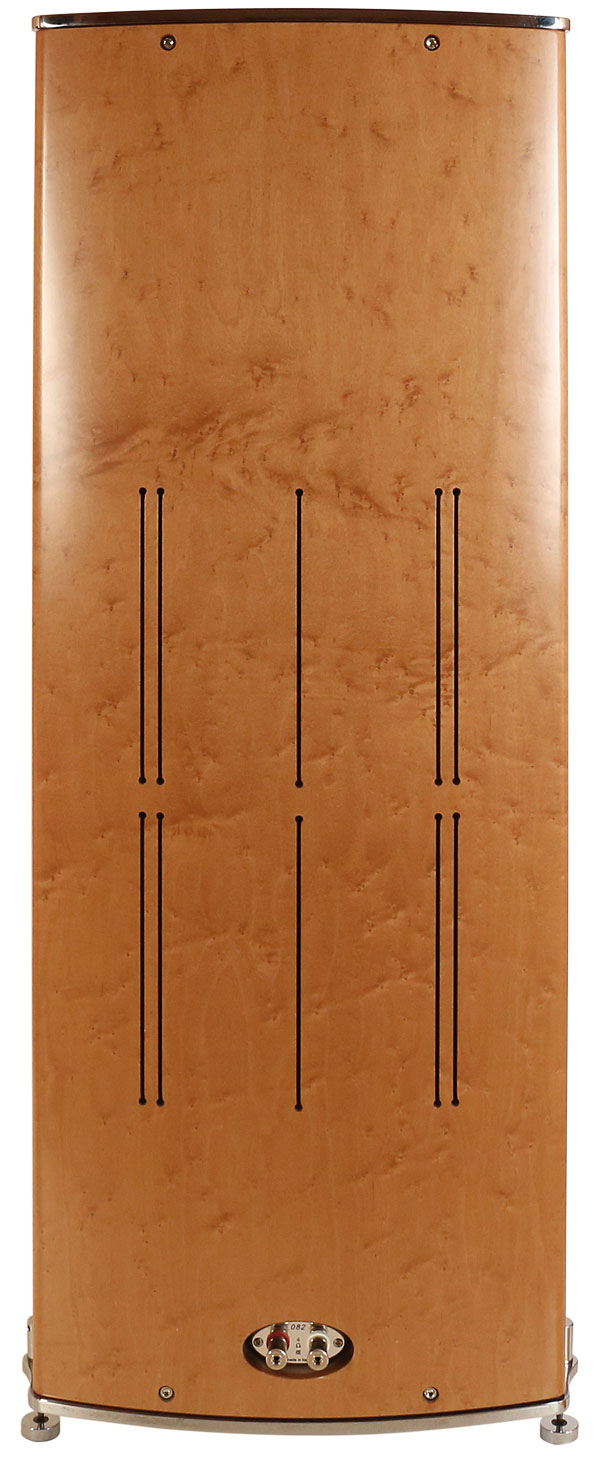Franco Serblin Ktêma Loudspeaker

 As boutique Italian brand Franco Serblin prepares to boost its range we look at the iconic flagship
As boutique Italian brand Franco Serblin prepares to boost its range we look at the iconic flagship
Franco Serblin, who passed away in 2013, first unveiled his flagship Ktêma in 2010. He had left Sonus faber, which he founded in 1983, in 2006, so the Ktêma was in development for nearly five years before he felt it was ready to be sold by the new company bearing his name. I remember the tension during its gestation, and Franco's elation at being able to produce a no-compromise system – not that he was ever restrained at Sonus faber. Think of the phenomenal Extrema, Guarneri and Stradivarius. The wait for the Ktêma proved worth it – as did the anticipation lasting a decade to hear a pair in my own system.
Why the delay in the full HFN treatment of this system? Whatever hindered the distribution here, we in the UK now have full access to this company, having looked at the Accordo two years ago [HFN Jan '18]. Renewed efforts and a discernible buzz about the brand thus justify our examination of this £25k-per-pair flagship system – its longevity marking it as a classic-in-the-making.
Whiff Of Luxury
We reviewed the Ktêma in Satin Sycamore, which would look simply wonderful in some open-architecture cabin with lots of woodwork, while those after a more tech-y feel can opt for high-gloss piano black. Both are capped and shod with hand-polished aluminium top and bottom plates, the latter accepting four superbly-finished, adjustable spikes. They're threaded, with caps on the top, so the attention to detail pays off in the absence of typically ugly, black anodised spikes which look like someone bought them in bulk at B&Q. By contrast, the Ktêma rests on bejewelled feet.
Installing them is a two-person effort as they weigh 55kg apiece and you do not want to mar the sublime finishes. They actually arrive protected by velvet drawstring covers, reminiscent of limited-edition champagne, costly perfumes and fine watches. This is what high-end audio should convey: the same whiff of luxury we associate with other artisan creations, and the Ktêma lets you see, feel and hear where your money went.
Triple Arch
Once out of the boxes, don't rush to install the spikes. I recommend positioning the speakers before fitting them, even though they also come with small metal coasters to protect wooden or tiled floors. The coasters are rubber underneath, so do not slide, but positioning prior to spiking and marking the locations with tape is advisable regardless of floor surface.

Unlike the Sonus fabers of Franco's day, the Ktêma's toe-in isn't intended to form a triangle that crosses just in front of the hot seat, but work best aimed precisely at the listening position, so that turning one's head to look at each speaker results in a face-on view of the baffle and drivers.
Franco's obsession was all about recreating the space of a live event. This, in turn, explains the unusual shape of the Ktêma and its almost-triangular footprint culminating in a severely narrow baffle only 170mm wide. That's narrower than an LS3/5A. The speaker spreads to 400mm across the rear, while front-to-back it's 460mm deep. And they like to breathe, so allow at least 0.5m from all walls.
Franco dubbed the construction a 'triple arch cabinet structure'. It is made from thin layers of wood and aliphatic glue 'hot pressed' together, all chosen to control enclosure resonances. That narrow front baffle, Franco told me, 'was reduced to the physical limit of the driver dimensions'. He felt that it was necessary 'in order to offer the smallest surface possible for the untrammelled dispersion of midrange and high frequencies'. Another benefit is the 'improved transmission of the radiated energy'. This is all part of his quest to recreate a proscenium effect, and I have to admit I have never heard a non-panel speaker that 'disappears' like the Ktêma. There are simply no clues to the presence of a cabinet-type enclosure.
A vertical array comprising a 28mm soft-dome tweeter above two custom-made, 100mm midrange units resides in a step-compensated baffle, in what the company calls 'a cardioid acoustic-resistance configuration'. For some reason, I fantasised about the company issuing that driver array in a 45cm-tall standmount enclosure to fill the gap between the Accordo mini-monitor and the 111cm-tall Ktêma – not too far a stretch as the mids, fitted in their own 'double aperiodic' sub-structure, could easily extend below the 135Hz where they meet the woofers.
A brace of these custom-made, compression-loaded 230mm metal cone drivers fires out of the back of each tower. The woofers are covered by a slotted rear panel with vents at the sides, which force the sound outward. Those with recall for hi-fi trivia will remember that the original Extrema [HFN Jul '14] was fitted with a metal plate standing proud of its rear-firing KEF B139 woofer to similar effect.
























































